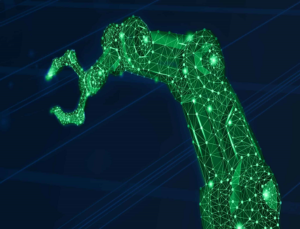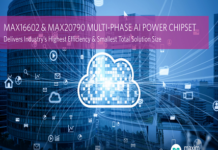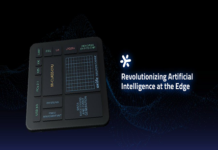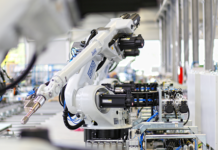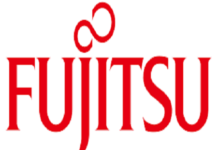BrainChip: Key Differences Between Transfer Learning and Incremental Learning
By
Electronics Media
-
August 25, 2021
INTERVIEW
BrainChip offers insight into two widely accepted forms of deep learning
The massive computing resources required to train neural networks for AI/ML tasks has driven interest in two forms of learning presumed to be more efficient: transfer learning and incremental learning. Experts at BrainChip Holdings Ltd, a leading provider of ultra-low power high performance artificial intelligence technology, offered the following insight and considerations for their use in edge AI/IoT environments.
In transfer learning, applicable knowledge established in a previously trained AI model is “imported” and used as the basis of a new model. After taking this shortcut of using a pretrained model, such as an open-source image or NLP dataset, new objects can be added to customize the result for the particular scenario.
The primary downfall of this system is accuracy. Fine-tuning the pretrained model requires large amounts of task-specific data to add new weights or data points. As it requires working with layers in the pretrained model to get to where it has value for creating the new model, it may also require more specialized, machine-learning savvy skills, tools, and service vendors.
When used for edge AI applications, transfer learning involves sending data to the cloud for retraining, incurring privacy and security risks. Once a new model is trained, any time there is new information to learn, the entire training process needs to be repeated. This is a frequent challenge in edge AI, where devices must constantly adapt to changes in the field.
“First and foremost is the issue of there being an available model that you can make work for your application, which is not likely for anything but very basic AI, and then you need enough samples to retrain it properly,” said Anil Mankar, Co-founder, Chief Development Officer at BrainChip. “Since this requires going to the cloud for retraining and then back down to the device, transfer learning is still a very complex and costly process, though it’s a nice option when and where it’s possible to use it.”
Incremental learning is another form that is often used to reduce the resources used to train models because of its efficiency and ability to accommodate new and changed data inputs. An edge device that can perform incremental learning within the device itself, rather than send data to the cloud, can learn continuously.
Incremental or “one-shot” learning can begin with a very small set of samples, and grow its knowledge as more data is absorbed. The ability to evolve based on more data also results in higher accuracy. When retraining is done on the device’s hardware, instead of cloud retraining, the data and application remains private and secure.
“Most of the time, AI projects don’t have large enough data sets in the beginning, and don’t have access to cloud computing for retraining, so they keep paying their vendor whenever anything changes,” said Mankar. “We generally recommend incremental learning because it addresses most of the shortcomings of transfer learning and requires dramatically lower computing costs.”
BrainChip’s Akida brings artificial intelligence to the edge in a way that existing technologies are not capable. The solution is high-performance, small, ultra-low power and enables a wide array of edge capabilities. The Akida (NSoC) and intellectual property, can be used in applications including Smart Home, Smart Health, Smart City and Smart Transportation. These applications include but are not limited to home automation and remote controls, industrial IoT, robotics, security cameras, sensors, unmanned aircraft, autonomous vehicles, medical instruments, object detection, sound detection, odor and taste detection, gesture control and cybersecurity.
RELATED ARTICLESMORE FROM AUTHOR
- Previous articleOptiemus Electronics Limited forms Alliance with Taiwan’s Wistron for Electronics Manufacturing & related Eco-System in India
Next articleQorvo QPF4526 Tiny, Compact Wi-Fi 6 Front End Module now available from Mouser
Electronics Media
Electronics Media is an Indian electronics and tech journalism platform dedicated for international electronics and tech industry. EM covers news from semiconductor, aerospace, defense-e, IOT, design, tech startup, emerging technology, innovation and business trends worldwide. Follow us on twitter for latest update in industry.
Artificial Intelligence
Maxim’s Multi-Phase AI Power Chipset delivers Industry’s Highest Efficiency & Smallest Total Solution Size
Artificial Intelligence
FP-AI-FACEREC1: Lowering the Barrier to Machine Learning Reveals New Applications
Artificial Intelligence
ST’s Global-Shutter Sensor Technology Supports Eyeris AI based Automotive In-Cabin Monitoring
Artificial Intelligence
BrainChip Receives Akida Chips from Socionext America
Artificial Intelligence
Dürr expands first market-ready AI application for paint shops
Artificial Intelligence
Fujitsu AI Scoring Platform Powers New Galileo XAI Solution from LARUS for Financial Services Industry
STMicroelectronics to Master the Payment Industry Both in Banking and Mobile...
July 26, 2021
ANYWAVES to lead the market of Miniature Antennas for Satellites Constellations
July 22, 2021
Interview: Skill India Vision and Road Map for the Next Years
July 15, 2021
vipro-HEAD 5 Suitable for Use in Zero Gravity
May 27, 2021
Powering Remote Connectivity in the Lab: Design, Test, Analyze & Troubleshoot...
April 7, 2021
[email protected]
© Copyright 2016 - 2020 Digi Electro Media All Rights Reserved.
We use cookies to ensure that we give you the best experience on our website. If you continue to use this site we will assume that you are happy with it.Agree
- Forums
- ASX - By Stock
- 2021 BRN Discussion
BrainChip: Key Differences Between Transfer Learning and...
-
- There are more pages in this discussion • 13,267 more messages in this thread...
You’re viewing a single post only. To view the entire thread just sign in or Join Now (FREE)
Featured News
Add BRN (ASX) to my watchlist
 (20min delay) (20min delay)
|
|||||
|
Last
21.5¢ |
Change
-0.005(2.27%) |
Mkt cap ! $399.0M | |||
| Open | High | Low | Value | Volume |
| 22.0¢ | 22.0¢ | 21.0¢ | $696.6K | 3.233M |
Buyers (Bids)
| No. | Vol. | Price($) |
|---|---|---|
| 47 | 1400407 | 21.0¢ |
Sellers (Offers)
| Price($) | Vol. | No. |
|---|---|---|
| 21.5¢ | 218182 | 13 |
View Market Depth
| No. | Vol. | Price($) |
|---|---|---|
| 3 | 6984 | 0.215 |
| 36 | 1158412 | 0.210 |
| 36 | 1191167 | 0.205 |
| 85 | 2021820 | 0.200 |
| 20 | 619589 | 0.195 |
| Price($) | Vol. | No. |
|---|---|---|
| 0.190 | 6116 | 1 |
| 0.205 | 6189 | 2 |
| 0.210 | 8325 | 4 |
| 0.215 | 380002 | 13 |
| 0.220 | 1127747 | 19 |
| Last trade - 16.10pm 19/06/2024 (20 minute delay) ? |
Featured News
| BRN (ASX) Chart |
The Watchlist
CC9
CHARIOT CORPORATION LTD
Shanthar Pathmanathan, MD
Shanthar Pathmanathan
MD
Previous Video
Next Video
SPONSORED BY The Market Online
